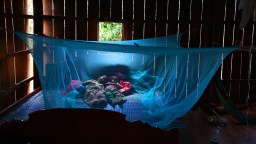In 2011, a research team featuring several Hertz Foundation Fellows received a grant to participate in the Bill & Melinda Gates Foundation’s ‘Reinvent the Toilet Challenge’. To bring sustainable sanitation to the 2.5 billion people globally who don’t have access to safe toilets, which leads to millions of deaths each year from highly preventable diseases, this team developed a self-powered combustion toilet that transforms feces into biological charcoal (biochar), clean water, and minerals. With the support of the Fannie and John Hertz Foundation, epidemiologist Philip Eckhoff pursued a PhD in applied and computational mathematics at Princeton University, receiving his degree in 2009.
The Hertz Foundation mission is to provide unique financial and fellowship support to the nation’s most remarkable PhD students in the hard sciences. Hertz Fellowships are among the most prestigious in the world, and the foundation has invested over $200 million in Hertz Fellows since 1963 (present value) and supported over 1,100 brilliant and creative young scientists, who have gone on to become Nobel laureates, high-ranking military personnel, astronauts, inventors, Silicon Valley leaders, and tenured university professors. For more information, visit hertzfoundation.org.
Philip Eckhoff: So one of the great things that I love about what I do is we get to take on some of the biggest challenges in global health and global development. And one of those challenges is water sanitation and hygiene. Everybody needs clean water and, you know, to quote the book, everybody poops. And dealing with this in a clean and sanitary way is really important for quality of life, and it’s also really important for health and getting rid of certain diseases that are transmitted.
And one of the biggest challenges over the last couple of years, a really fun technological challenge has been the Reinvent the Toilet Project. The basic theme of this was looking at are there new solutions, twenty-first century solutions to sanitation--Echoing what we saw in telephone and communication systems where a lot of countries completely skipped over building a big network of landlines and traditional phones and went straight to cell phones. The question was, could we come up with the equivalent technology that would jump over building out sewer networks and giant expensive water treatment plants and jump immediately to non-network sanitation?
And it turns out that new approaches are possible using mechanical engineering and chemical engineering approaches. There is actually a lot of free energy in the waste that can be used to process itself if the machine to do it is designed correctly. And you can actually do this is a fairly cost effective way.
So the Reinvent the Toilet challenge was kicked off about five years ago in order to get universities, different companies, design firms and so on to actually think about this and put twenty-first century innovation applied to the problem of human sanitation. And it’s been remarkably cool and successful so far to see the different approaches that have come up.
There was one team of a lot of Hertz Fellows that started working on figuring out new ways to use pyrolysis and other approaches for using electrolysis for drying and combusting. One group is running a steam engine off of human waste as an input stream. And where a community would used to have ten tons of waste a day now all of a sudden it runs a steam engine that generates 150 kilowatts of electricity and puts out 10,000 to 20,000 liters a day of potable water.
So this is just really exciting to see what innovation can do, what new technologies can do, and actually taking on some of these really big challenges and saying, "What would be a really definitive technological solution to this that actually solves the problem in a way that we would never have imagined trying 25 or 30 years ago?"




